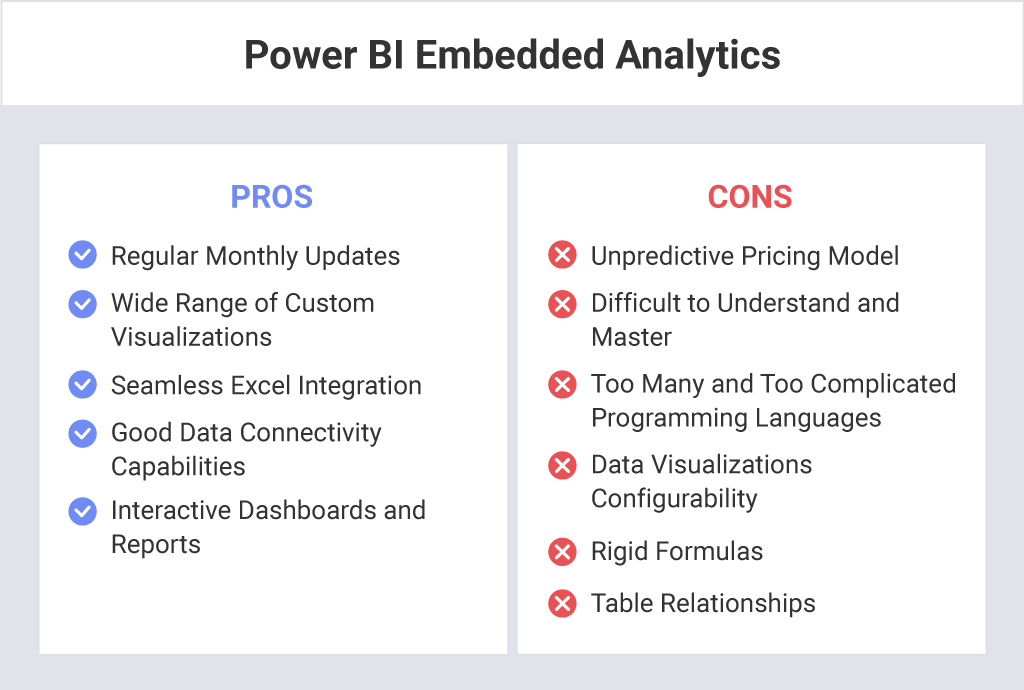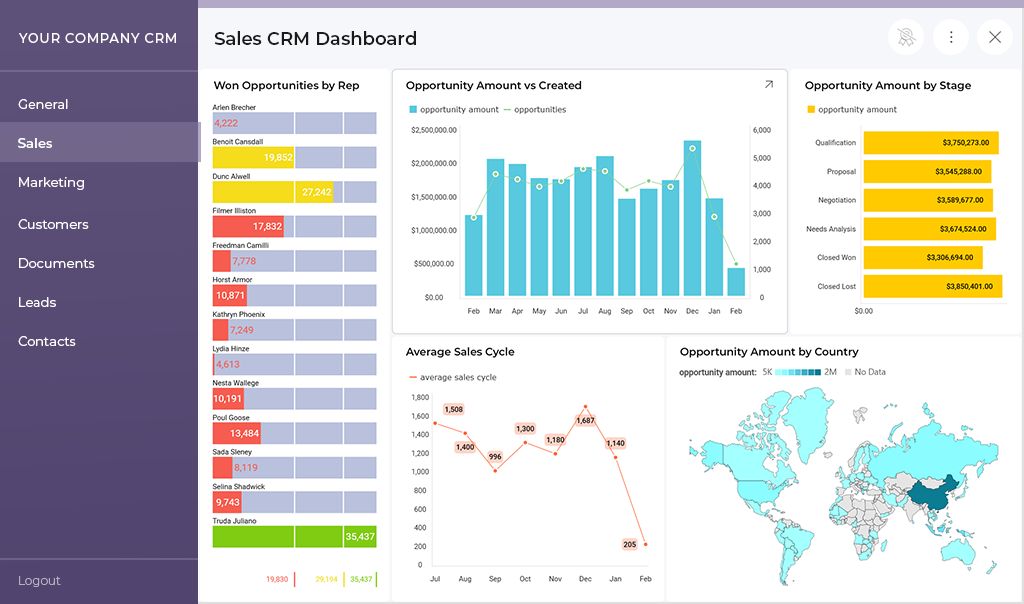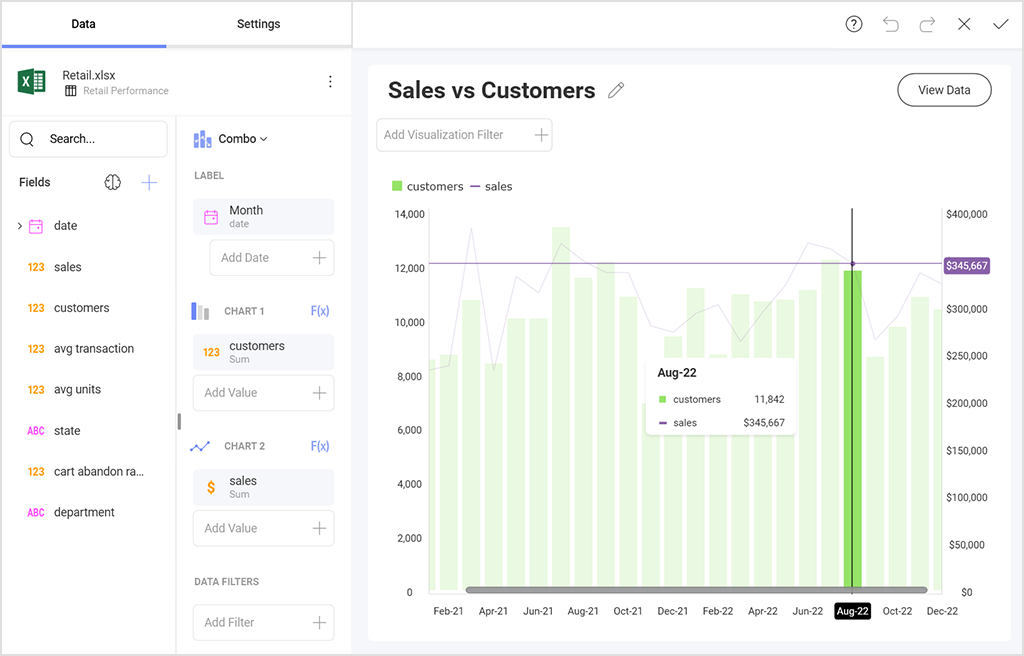
Scriptly Helps Pharmacies Identify Trends in Real Time with Reveal
Find out what are the pros and cons of Microsoft’s data analytics platform and identify whether it is the right analytics solution for your business needs.
Executive Summary:
Choosing the right embedded analytics solution to partner with is crucial. Businesses use analytical and business intelligence (BI) capabilities in their applications and daily workflows to keep track of their operations, marketing and sales performances, predict future business opportunities, make smarter decisions faster, and much more.
Nowadays, it is quite evident that businesses’ success heavily relies on data insights that embedded analytics software can provide them with.
We know that in today’s highly competitive business environment and flooded markets, finding the right embedded analytics solution for your business needs is a difficult task. To help you narrow your options and come to a decision, in this article, we are taking a closer look at one of the embedded analytics platforms on the market – Power BI Embedded.
Find out what are the pros and cons of Microsoft’s data analytics platform and identify whether it is the right analytics solution for your business needs.
Microsoft Power BI is a cloud-based BI and analytics service that is something of an umbrella term and includes a Windows desktop application (Power BI Desktop), an online SaaS service (Power BI Service), a mobile app, and an embedded platform.
The Power BI Embedded solution allows independent software vendors (ISVs) and developers to embed the analytics capabilities and functionalities of Power BI into their own existing applications. The purpose of Power BI Embedded is to help its customers to manage and analyze the data they possess through an akin to an Excel interface.

Regular monthly updates – Microsoft releases updates for Power BI on a monthly basis. They have created a user community where users can upload their suggestions and tweaks about Power BI, and the suggestions that get the most rating from other users have a good chance of implementation and being part of the next product update. Along with the updates also comes an explanation blog post with a YouTube video outlining the changes made for the month. Power BI users get notified every time there is a new update available.
Wide range of custom visualizations – In addition to the general set of data visualizations available on Power BI, you can also use custom visualizations in your reports and dashboards i.e., visualizations made by developers for specific use cases. There is a KPI visualization, graphs, charts, maps, R script visuals, and more. One Power BI report can include multiple visualizations.
Seamless Excel integration – Power BI allows its users to upload, view, and work with their data in Excel. This is a great benefit for those who are fans of working with Excel and are used to it, but generally, Power BI (and any data analytics tool) has faster processing, it’s easier to use, and its dashboards, data visualizations, and reports are more appealing, interactive, and customizable.
Good data connectivity capabilities – Another benefit of Power BI is that it offers data connectivity to data files (XML, JSON, for example), SQL Server, Microsoft Excel, Azure sources, cloud-based sources, Google Analytics, etc. In addition, with Power BI, you can also access Big Data sources directly.
Interactive dashboards and reports – You can use Power BI’s drag-and-drop functionality to build in different data visualizations in a report. Furthermore, you can interact with visualization by applying filters, making selections in it, and more.
Unpredictive pricing model – One of Power BI Embedded’s biggest cons is its complicated pricing. While most embedded analytics vendors charge a fixed fee per user or usage basis, Power BI pricing is based on the capacity needed for deployment. The calculation is based on multiple parameters, and as they say, some of them are hard to predict. This is far from ideal, as pricing is one of the main factors when choosing a vendor to partner with. You would like to know how much you’ll need to pay upfront without having to make any calculations.
Difficult to understand and master – Power BI is intuitive and easy enough to use if you are using it to simply import data and create basic reports. However, Power BI is an entire suite of interrelated tools for advanced analysis, and if your purpose is to create more than just basic reports, you will need to learn and master several other tools such as Power BI Report Server, Power BI Services, Gateways, etc.
Too many and too complicated programming languages – DAX, Power BI’s own programming language, calculate metrics and variables. It also makes the data processing not entirely manual, which is a good thing, but compared to other languages, DAX is hard to grasp and requires you to master it in order to use it effectively. In Power BI, DAX performs manipulations, and another language, M is used to create the data model. And while there are third-party tools to help make DAX easier and eliminate the need to write or understand code in M, most analysts will likely prefer doing the data work with SQL, which is the standard language in data analysis, and which is not at all similar to DAX and M languages.
Data visualizations configurability – In most cases, you might not need or want to configure and optimize your visualizations, but if you do, Power BI does not provide many options to do so per your requirements.
Rigid formulas – You can perform many actions by using Power BI’s DAX formulas, but sometimes the formulas you’re created work well; other times, they just don’t. You can concatenate up to two elements, but concatenating more than two elements needs nesting statements.
Table relationships – Power BI is good enough for handling simple relationships between tables in a data model. But, if there are other, more complex relationships between tables (if they have more than one link between tables, for example), Power BI cannot handle them well. In some cases, you will have to make unique fields in tables, specifically for the purpose of joining them together.
Reveal is an embedded analytics and BI (business intelligence) platform that makes adding powerful analytics capabilities and data visualizations to your apps easier. It brings the power of data to the end users’ hands by transforming raw data into actionable insights which they can immediately understand. Reveal provides interactive dashboards, drill-down capability, sharing, white-label, true self-service with a drag-and-drop dashboard creator experience, and so much more.
Purpose-built for embedding, Reveal’s modern architecture includes native SDKs for any platform to deliver the best experience across devices. This makes connecting anywhere and anytime from the cloud, desktop, and mobile devices easy and convenient.
Reveal is part of the Infragistics company (founded 1989), an organization with 30+ years of experience in developers’ tools, application design tools, and, most recently, business intelligence tools.
So, how does Power BI compare to Reveal embedded analytics?
Here’s a comparison of some of the key embedded analytics features for both solutions:
| Reveal | Power BI | |
|---|---|---|
| Embedded Creator Experience | Native clients for Desktop, Web, iOS, Android | Desktop only |
| Embed / API Creator Experience |
|
|
| Native SDK Solution |
|
|
| Maintenance Costs | Simple Fixed Price | Complex |
| Predictable, No Capacity-Based Pricing |
|
|
| No Dedicated Server Required |
|
|
| Custom License Options |
|
Power BI offers a familiar and easy-to-use interface similar to Excel with the ability to combine power analytics with a user-friendly UI and great data visualization capabilities.
Reveal embedded analytics provides organizations with the most powerful, flexible, and predictable priced embedded analytics tool on the market. It offers one single, simple, and affordable price point that enables you to reach unlimited users per application- with no user or usage tiers. More so, Reveal’s flexible architecture and rich APIs give you full control of the features in your app, making it a seamless part of the user experience.

Both Power BI and Reveal embedded analytics are undoubtedly great platforms for data analysis. However, depending on your specific needs and budget, one or the other would work better for you.
We believe that Reveal has some stronger advantages over Power BI – its UI is much easier to navigate and get used to, offers seamless and more reliable integrations with non-Microsoft applications, and provides greater data visualization customization capabilities, among other things.

What else we consider to be in favor of Reveal is the pricing structure. Power BI pricing is complex and complicated – you’re looking for an embedded solution to save time building your own and not waste time calculating how much it will cost you. With Reveal, you get fixed pricing that won’t change and increase with your user base.
If you’re interested in learning more about the Reveal Embedded Analytics solution, schedule a product demo, and our solution consultants will show you how it works and how you can leverage the power of data to your advantage.
Back to Top